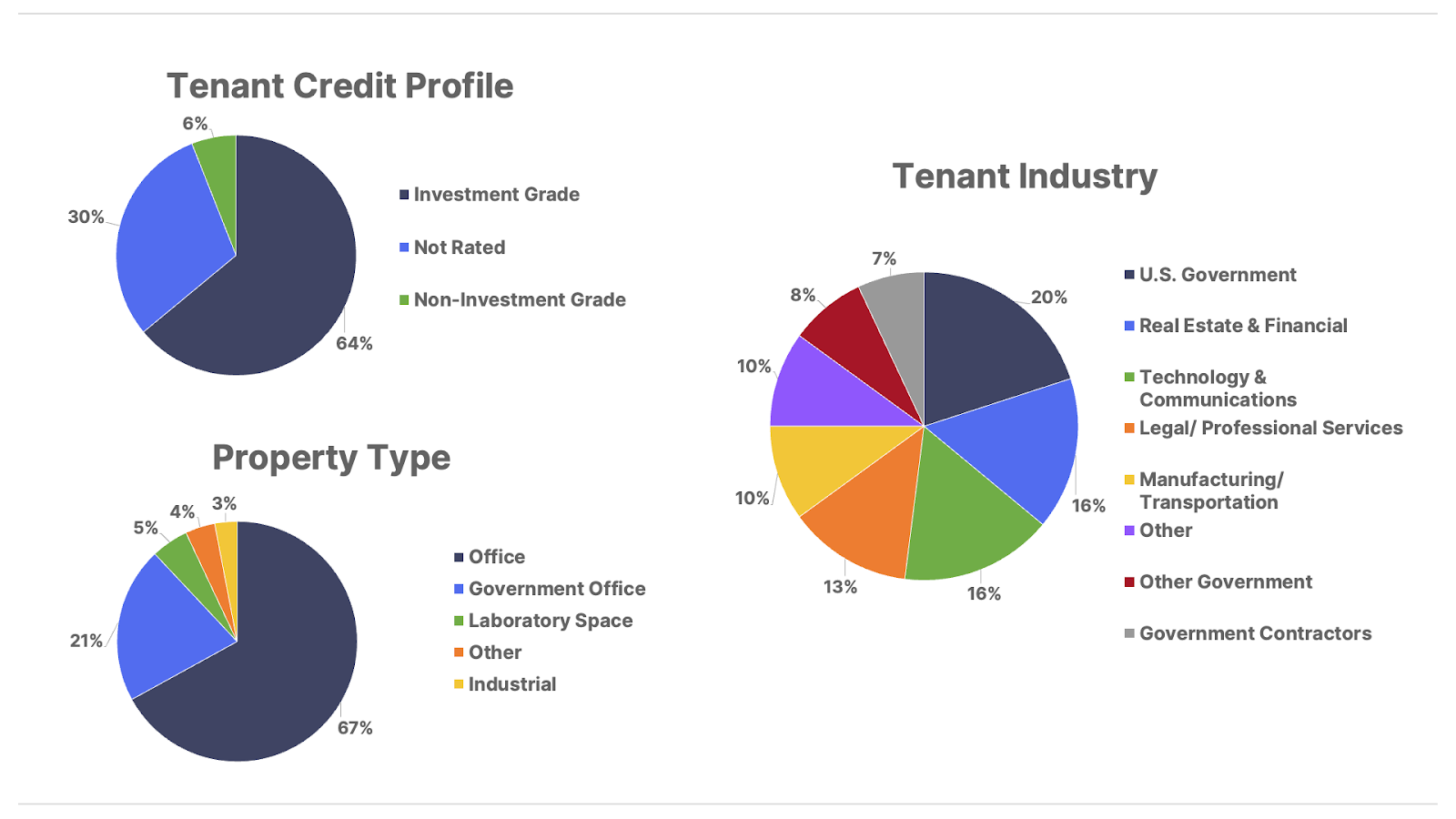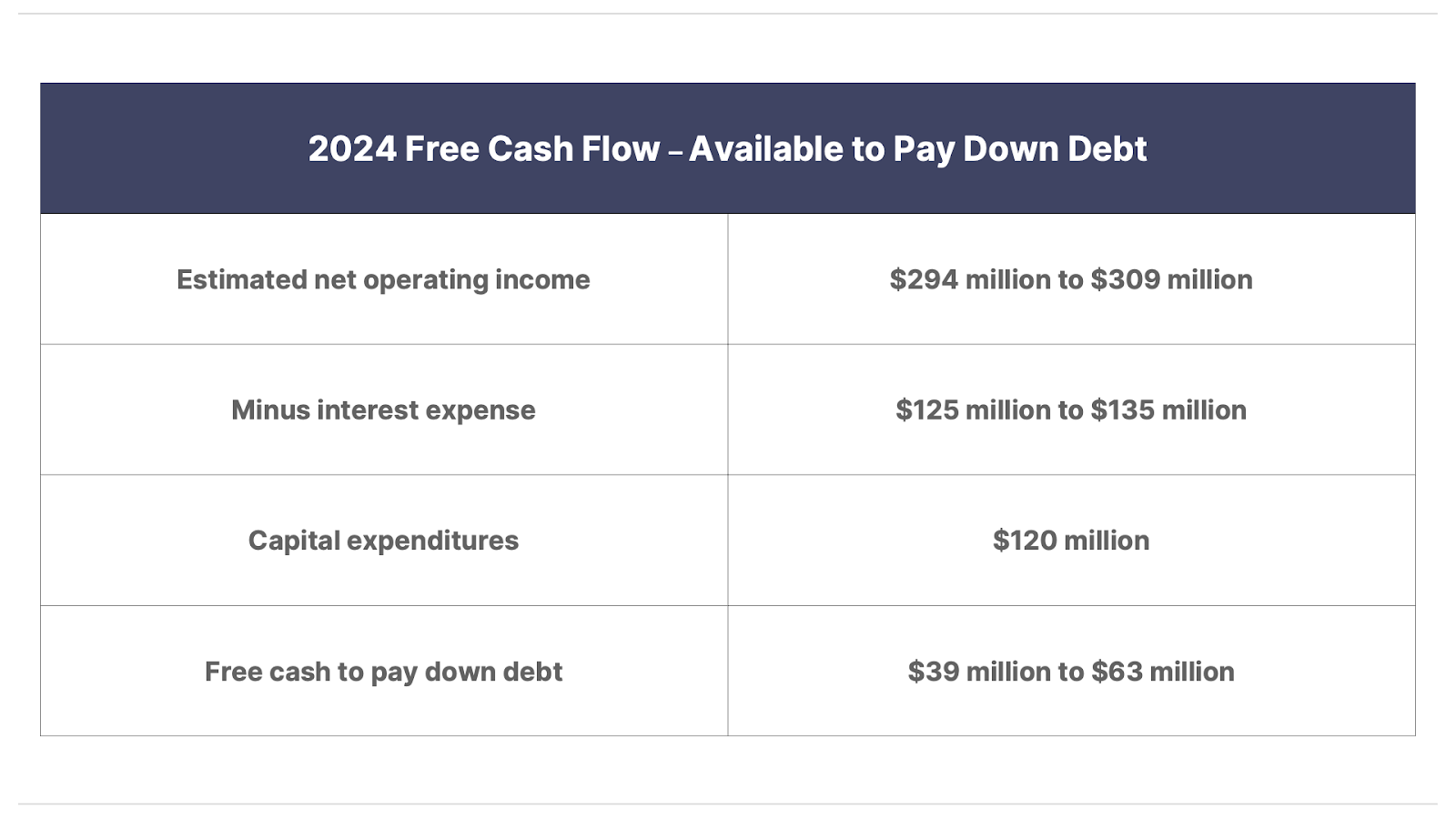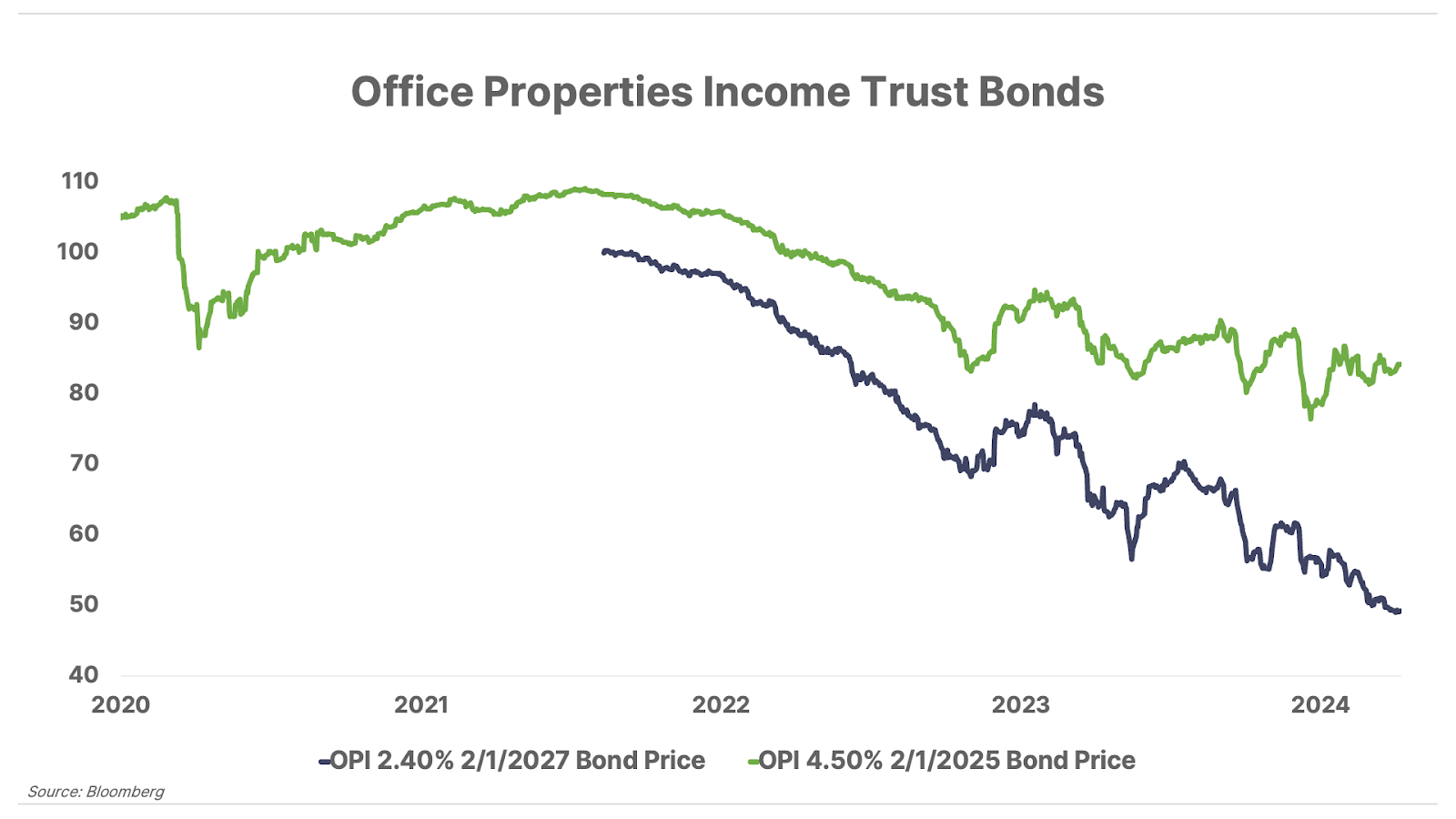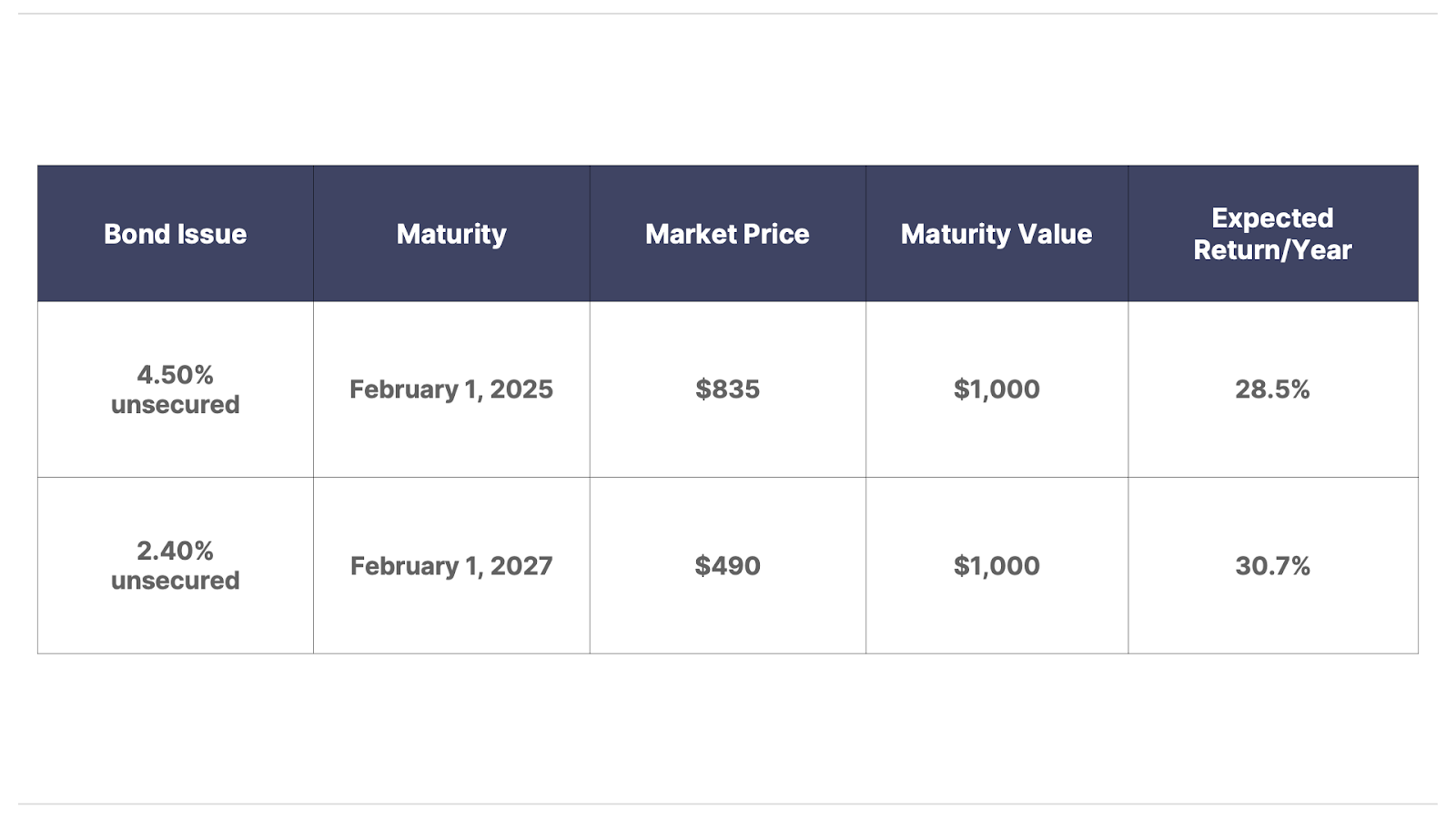
A Look Inside Our Most Exclusive Research
| In this week’s issue of The Big Secret on Wall Street, we’re giving readers a peek behind the curtain of Marty Fridson’s Distressed Investing advisory, detailing a deeply discounted debt opportunity in a sector that has been left for dead in the post-COVID world. |
Martin Fridson is a modern-day renaissance man.
He’s authored six highly acclaimed financial books – including Financial Statement Analysis, which The Green Magazine calls “one of the most useful investment books ever,” and Unwarranted Intrusions, which The Boston Globe said should be short-listed for best business book of the decade. He’s edited many more.
He’s also a published poet – his light verse has appeared in Playbill, The New York Times, and The Wall Street Journal.
Marty is known as The Dean of High Yield Debt – one of the world’s premier experts on the high-yield corporate (“junk”) bond market. According to Barron’s, “No one brings more insight or a better reputation for integrity to the junk-bond market than Marty Fridson.”
Over a 25-year span with Wall Street firms including Salomon Brothers, Morgan Stanley, and Merrill Lynch, he became known for his innovative work in credit analysis and investment strategy. And now he uses this expertise for the benefit of Porter & Co. members as the director of our Distressed Investing advisory, which unearths “unfairly distressed” bonds (and the occasional distressed equity).
Marty and his team research hundreds of securities to find those that they believe will be winners… that will generate significant capital gains while also paying out generous yields along the way.
The advantages of this approach stem from the rare features of the corporate-debt market. In short, there’s less risk associated with investing in bonds because – unlike stocks – the payout of bonds is agreed upon ahead of time, and the timetables are backed by law. The consequences for a company not making a payment could be a trip to bankruptcy court.
Because a bond’s terms are concrete, day-to-day price changes aren’t as significant to bondholders as they are for stockholders. All that matters is that the bond issuer is able to pay its interest and principal as promised.
Debt becomes distressed when the market believes that a company has insufficient funds to service its payment obligations. When fear or skepticism arises in connection with a company or its industry, reflecting uncertainty about the bond issuer’s ability to pay up, investors will flock to sell their bonds. And since there are more sellers than buyers, most likely their desperation sale is at a lower price than they originally paid.
A company may find itself in this situation because of a weak balance sheet – too much debt and not enough cash, for example – yet be viable from an operational standpoint. Even so, prevailing sentiment and market conditions can cause its bonds to trade well below their intrinsic value.
As bondholders rush to sell their bonds, the supply available on the market multiplies, resulting in sellers outnumbering buyers, and the bond’s price drops. Now that the bond is trading at a discount to its future cash flows, it’s available at a fraction of its face value.
However, because bonds are contractual, a company must pay back the bondholders in order to remain in business. So, if the company has the means to pay its debt obligations, it will. Consequently, buying the bonds of companies backed by sufficient assets or future cash flows enables holders to collect the full principal when it comes due.
This is where the opportunity lies, and Marty and his team swoop in to buy assets for pennies on the dollar.
We launched Porter & Co. Distressed Investing a little over one year ago, and the results have been extraordinary. Since March 2023, Marty and his team have made 14 recommendations – to date, 12 are in the green or have been closed for a gain, resulting in a remarkable average portfolio return of 19.4%.

Below you’ll find an excerpt from the April 2024 issue of Distressed Investing, highlighting the deeply discounted bond of a once-robust commercial real-estate company that saw tenants and therefore revenue evaporate as a result of remote-work trends brought on by COVID-era lockdowns.
In the full issue sent to subscribers earlier this month, we included an extensive review of three valuation options, a more detailed company profile, and the name and buying instructions of the recommended bond.
_______________
The Return-to-Office Rebound
Work From Home Crushed This Business
Waiting for a New Surge in Commercial Real Estate

Pornography was Sam Zell’s gateway drug to investing.
As a teen in the late 1950s, Zell would buy old issues of Playboy for 50 cents in downtown Chicago. Then he’d make the trek out of town to sell the tattered girly mags for $3 a pop to kids in the suburbs – where the recently launched Playboy wasn’t yet on newsstands.
After high school, Zell attended the University of Michigan, where as a freshman he managed 15 apartments in exchange for room and board. At the end of his four years there, he had taken on other properties, earning $150,000 (that’s more than a million in today’s dollars) during his senior year.
In law school, he went big, managing 4,000 apartments as his side hustle. With a law degree, a pile of cash, and plenty of real-world real-estate experience, in the late 1960s Zell started acquiring and managing apartments and apartment buildings in Reno, Nevada, after a friend suggested he could find “hidden gems” there.
He continued buying into the 1970s – in Reno, in Michigan, and in Toledo, Ohio. Low interest rates had created a surge in new construction. He recruited new investors so he could expand his portfolio of properties to include Arlington Towers, at the time the tallest building in Reno, for which he paid $9 million.
But – as often happens in markets – cheap money led to a bubble. By the mid-1970s, the real-estate market was in the midst of a bust. Quality buildings went on sale at bargain prices, as the blind exuberance that fueled the building spree turned to desperate panic as the market collapsed. Not over-leveraged and in good financial shape, Zell gobbled up properties.
It was the kind of bold, take-no-prisoners investing that would make Zell – who titled his autobiography Am I Being Too Subtle? Straight Talk From a Business Rebel and headed up a motorcycle gang called Zell’s Angels – a billionaire five times over.
Zell grew his business through the late 1970s into the ‘80s, always looking for good properties at bargain prices. And he found them following the Black Monday stock market collapse in the autumn of 1987, and the subsequent recession. With rents and occupancy rates falling, office landlords were squeezed. Zell raised capital for a fund to buy the distressed properties.
Zell made himself richer – and he also popularized the vehicle that made the investment work. He ushered in the modern version of the real estate investment trust (“REIT”), a – until then – rarely used Eisenhower-era structure to invest in real estate.
Zell refocused REITs to benefit shareholders, himself included – establishing a number of them, including Equity Commonwealth that funded office buildings in the 1980s, then Equity Residential for apartments a decade later, and Equity LifeStyle Properties for prefab houses after that. Each fund was launched at a time when that particular sector of the real estate market was in the doldrums – or on the verge of emerging from the depths.

He gave himself the nickname “grave dancer” for his predilection for swooping in on an asset – an investment – that was on death’s doorstep.
By 2007, he had amassed a vast real estate fortune, valued at… well, whatever someone would pay for it, as he liked to say.
That someone, it turned out, was giant money manager Blackstone, who paid Zell and his partners $39 billion for Equity Office Properties, with 500 office buildings and 100 million square feet across the U.S. The purchase was 25% above the REIT’s market cap at the time.
A year later, the Great Financial Crisis struck… and Zell was off enjoying life, riding with his Angels, rather than worrying about real estate. Lehman Brothers collapsed, other banks failed, and commercial property values plunged.
Zell died last year, at age 81. But if he were alive, he’d likely be dancing on graves now, because today, commercial real estate is once again in distress. Office vacancy rates across top major U.S. cities are about 20% above what they were in 2020, just before the pandemic.
With legions of employees permanently working from home, companies are giving up their acres of cubicles, and abandoning offices. Companies are shrinking their square footage, consolidating spaces, and driving up vacancy rates.
Conventional wisdom argues for staying away from the office and retail assets that helped make Sam Zell a billionaire. Malls have long been written off for dead, e-commerce is emptying out bricks-and-mortar stores, and vacancy rates are rising in cities across the country.
Just last year, Zell ridiculed remote work as “a bunch of bull****“ and explained why he doesn’t believe it will become a new, permanent norm.
In this issue, we look at the bonds of one REIT that are in deep distress – its vast holdings of offices and mixed-used space has been hurt by the pandemic-driven, work-from-home trend… one that Zell would likely be looking at very closely as well.
What we like about these bonds:
- At market prices, the current income on the bond is roughly 4.8% per year
- They are currently selling at a very distressed price, with an annual yield of 31%
- The market price has declined so far that the upside potential exceeds downside risk
- At book value the company’s real estate assets are worth 27% more than all its debt – valued at full face value
- The company’s properties generate substantial operating income
- Even with operating results in 2024 likely to decline meaningfully, the company should comfortably be able to make all interest payments on time
A Company With No Employees
Office Properties Income Trust (Nasdaq: OPI) is a real estate investment trust (“REIT”). The instrument popularized by Sam Zell, a REIT owns real estate on which it collects rents, which it then distributes as dividends.
OPI owns office buildings and mixed-use properties (for OPI, this means laboratory space and hotels) across the U.S. It will generate revenue – essentially rental income – of roughly $500 million this year. This is down from $534 million in 2023 and $554 million in 2022.
Owing to an oversupply of office space, one of OPI’s bonds, for example, has declined in price from $970 in 2022 to $490 now. Still declining in value, that particular bond is currently priced as if a bankruptcy (or a distressed exchange) is likely.
That said, we believe the market has driven down the price of OPI’s bonds too far. Many of its bonds are selling well below the $1,000 face value. In this issue, we will show you why we think they’re worth more than that – possibly much more.
OPI has high-quality assets and a high-grade tenant base. And the company holds $1.2 billion of assets that it could sell or mortgage to raise cash. Alternatively, OPI may attempt to extend the maturity of its bonds to give it time for the real-estate markets to stabilize and eventually improve.
OPI works to maintain a tenant base made up of companies in solid financial condition representing a variety of businesses. About 64% of OPI’s tenant revenues come from companies (and subsidiaries of companies) with investment-grade credit ratings. Various agencies of the federal government account for just under $100 million, or 19.5% of total annualized rental revenue.

Office Properties Income Trust itself has no employees. RMR Group – a real estate company that oversees roughly 2,000 properties that generate $5 billion in annual revenue – provides day-to-day property management. It also supervises construction, leases out properties, and provides financial management.
Despite its impressive roster of tenants, many in strong financial condition, OPI’s bonds trade at distressed prices because there is a nationwide glut of office space. In fact, 19.6% of office space is currently unleased, the highest level since 1979, according to The Wall Street Journal.
This excess of unleased office space has come about for a few main reasons:
- Working from home, a trend that started with pandemic lockdowns, remains popular with employees – and some employers as well
- Economic uncertainty triggered by the pandemic left many companies in weak financial shape and looking to reduce fixed expenses
- Rising interest rates have increased borrowing costs over the last couple of years
OPI ended 2023 with 2.69 million square feet – 10.5% of its space – vacant. In addition, 34% of its leases – and annual rental income – come due from 2024 through 2026.

OPI has leases totaling 2.98 million square feet scheduled to expire over the course of 2024. As of February 14, 2024, tenants accounting for at least 1.88 million rentable square feet ($53.8 million in rental income) indicated they will not be renewing their leases. The company has inquiries on 2.8 million square feet of office space (roughly 60% from current lessees and 40% from new tenants). OPI reports that the level of competition for new tenants is intense, and that it’s dragging down rental rates. OPI is likely to end 2024 with additional unleased space.
OPI’s road gets a little easier after 2024. The company’s schedule of expiring leases declines almost 30% in 2025, and by almost half in 2026 – compared with 2024. It is reasonable to believe that after peaking in 2024 or 2025, the amount of OPI’s unleased space could begin to decline around 2026.
There are a few longer-term reasons to be guardedly optimistic about its prospects:
- Companies are increasingly requiring employees to spend more time in the office
- Some office space – particularly in older buildings with smaller floor plates – can be converted into residential housing, which is in short supply in many markets
- Over time, economic growth should cause demand for office space to rise
Looking at OPI’s Financials
OPI’s office buildings and multi-use properties have traditionally generated more than enough cash to cover its interest expenses. It’s a convention in commercial real estate to gauge operating performance by looking at net operating income – rental income minus property expenses – which, as the table below shows, has been in steady decline since 2019.

We’re assuming that lease vacancies will end up reducing 2024 operating profits by $40 million to $50 million – a 15% decline over 2023.
On the positive side, OPI should start receiving revenue from two new development projects, which together will add $10 million to $15 million to profitability in 2024.
Putting these pieces together, OPI would generate modest free cash flow (“FCF”) of $39 million to $63 million after interest payments and capital expenditures, which would likely go toward paying down debt.

Maintaining a Good Level of Liquidity
Since year-end 2023, OPI has taken a number of steps to maintain financial stability. On December 31, OPI had $13.4 million in cash, and it has $193 million available on its bank loans. The company also refinanced its bank agreement, issued new 9% secured bonds, and repaid $350 million in 4.5% bonds that were scheduled to mature on May 15, 2024.
Between issuing new bonds and taking a loan from its bank, OPI raised a total of $725 million against $1.5 billion (book value) in assets – and it has mortgages backed by an estimated $705 million in assets. Putting these together, the total book value of properties mortgaged or pledged as collateral is $2.2 billion. Based on the current $3.4 billion book value of the properties, this leaves $1.2 billion in unpledged assets.
The Best Risk/Reward Profile
There are two basic types of risk to consider when buying distressed bonds:
- The odds that the company makes all payments of interest and principal on time and in full
- How much an investor stands to lose (or, sometimes, gain!) if the company that issued the bonds attempts a distressed-bond exchange or files for bankruptcy
Many companies have more than one bond issue outstanding at any time – as is the case with OPI. When a company has a number of bond issues, we need to figure out which one of those bonds offers investors the most favorable combination of upside potential and downside risk.
When there is no (or very little) risk that the company might end up filing for bankruptcy, we focus on the bond’s price, how long until it matures, and what annual return an investor can expect if they hold the bond until it comes due and gets repaid in full.
That’s not the case with OPI – as there is the potential of a bankruptcy filing.
Which bond to buy when there is a risk the borrower will file for bankruptcy – or try a distressed exchange to stave off bankruptcy – is more complicated. A bankruptcy filing means the company stops paying interest while it works out a plan of reorganization with its creditors.
When a company files for bankruptcy, all of its bonds are accelerated – which means they’re all considered to mature the day of the bankruptcy filing. Interest rate and maturity date don’t matter anymore. All bonds with the same level of seniority are treated equally.
Let’s look at two bonds issued by Office Properties Income Trust – both on the chart and the more detailed table below (bonds are quoted in percent-of-face-value terms, so, for example, $490 on face value of $1,000 translates to a price of 49):


Here are some key points to note:
- The extremely high expected annual returns (or maturity values) of 28.5% and 30.7% show the market is worried that OPI’s bondholders will not receive full $1,000 payment per bond – and that the company will need to file for bankruptcy or attempt a bond exchange of some sort.
- The bond maturing in 2025 trades at a higher price than the bond maturing in 2027 because the odds of OPI making all payments of interest and principal through 2025 are higher than making all payments through 2027.
- This lower odds of OPI making all principal and interest payments through February 2027 means the expected return for the bond maturing in 2027 is higher than for the bond maturing in 2025 – because an investor requires a higher return for assuming the higher risk.
Let’s look at some possible outcomes:
- If the company never files for bankruptcy or attempts a distressed exchange, both bonds end up being paid in full. The profit is higher on the lower-priced 2027 bond.
- If the company were to file for bankruptcy before February 1, 2025, both bonds would be subject to loss. At the end of a bankruptcy both would likely be lumped into one security and receive the same payment.
- If this happens, the potential loss on a bond (in this case the 2025 one) that costs $843 is greater than on one that costs $490.
- If the company were to file for bankruptcy after February 1, 2025, and before February 1, 2027, the 2025 bond would have been paid off in full and the 2027 bond would probably receive less than the full value the 2025 bond gets.
Risks
The distressed trading price of OPI’s bonds indicates that the risk level here is high. The most significant risks for OPI and its bondholders are:
- With a large segment of employees in the U.S. continuing to work from home – at least for part of the week – many businesses are committed to renting more office space than they currently need. Because of that, office vacancy rates have risen in most markets over the last few years and are likely to keep increasing in 2024.
- Rising vacancy rates for office space will likely reduce OPI’s operating profit and may require it to write down the book value of its properties.
- OPI has $1.3 billion in bonds maturing between 2025 and 2027. If the company believes it will be unable to repay or refinance all this debt, it will look to exchange the bonds with new longer-dated bonds. If an exchange offer fails, OPI would most likely need to file for bankruptcy.
- The company has pledged almost 80% of its assets to various lenders. In a bankruptcy, the loans secured by these properties are entitled to full repayment before any value would go to pay unsecured bondholders.
- Almost 20% of OPI’s operating income comes from leases to various departments of the U.S. government, normally a secure revenue stream. An extended government shutdown, however, would have negative financial consequences.
_______________
If you’d like to learn more about Porter & Co. Distressed Investing – including which bond we added to the portfolio, how you can get immediate access to Marty’s exclusive research, and detailed buying and selling instructions to share with your broker – contact customer-care concierge, Lance James, and his team. You can call them at 888-610-8895 or 443-815-4447. You can send an email to [email protected].
Porter & Co.
Stevenson, MD